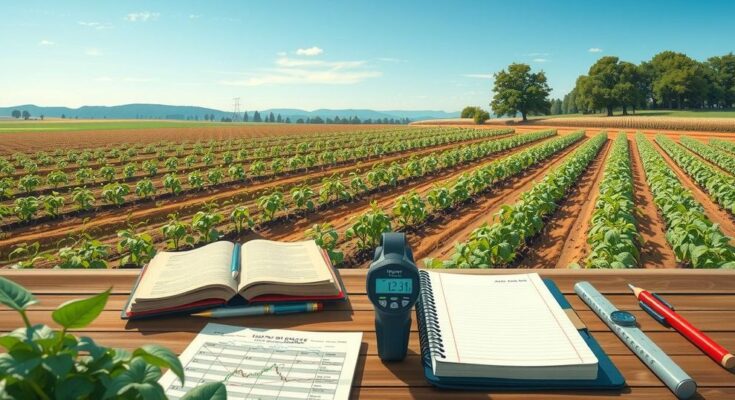A recent study emphasizes the necessity for a 5-8% annual increase in agricultural research funding in the U.S. to address climate change-induced productivity declines. The projected needs equate to an additional $2.2 billion to $3.8 billion in annual investments, crucial for maintaining agricultural outputs by 2050. The study highlights the distinct advantages of public sector R&D over private investments and calls for urgent action to secure the future of U.S. agriculture.
Recent research highlights the urgent need for increased investment in agricultural research and development (R&D) in the United States to combat the productivity decline caused by climate change. A study published in the Proceedings of the National Academy of Sciences recommends an annual growth of 5% to 8% in research investment, essential for maintaining agricultural productivity through 2050. Alternatively, a fixed annual investment of $2.2 billion to $3.8 billion could also counteract this slowdown.
The researchers, led by Dr. Ariel Ortiz-Bobea, highlighted the significant impact of climate change on agricultural productivity, estimating that a 3-degree Celsius rise in temperature could reduce outputs by more than 10%. The current public sector investment in agricultural R&D sits at $5 billion, but has stagnated over recent decades. An incremental growth in funding is deemed necessary to address the urgent challenges facing U.S. agriculture.
The study notes that public funding in agricultural R&D differs significantly from private investments, which often involve high costs for farmers. Public sector research offers greater returns without proportional financial liabilities, supporting a variety of beneficial technologies and management practices. Without increased public funding, Ortiz-Bobea warns of a future marked by declining productivity, environmental degradation, and increased reliance on foreign agriculture.
As countries like China and Brazil enhance their R&D investments, the researchers emphasize the United States must act decisively. They argue that historical precedent demonstrates the country’s capability to mobilize significant research funding when needed. The findings call for a collective decision regarding the future direction of U.S. agriculture, emphasizing that consistent investment is crucial to preserving and advancing agricultural efficiency against climate change.
In conclusion, the study underscores a critical junction for U.S. agriculture, advocating for a marked increase in public R&D funding to counter the productivity losses associated with climate change. The findings indicate that an increase of 5% to 8% annually in research investment or a fixed annual increase of $2.2 billion to $3.8 billion is essential. With a strategic commitment to bolster agricultural research, there exists a viable path forward to enhance productivity and sustainability in the sector.
Original Source: www.technologynetworks.com




